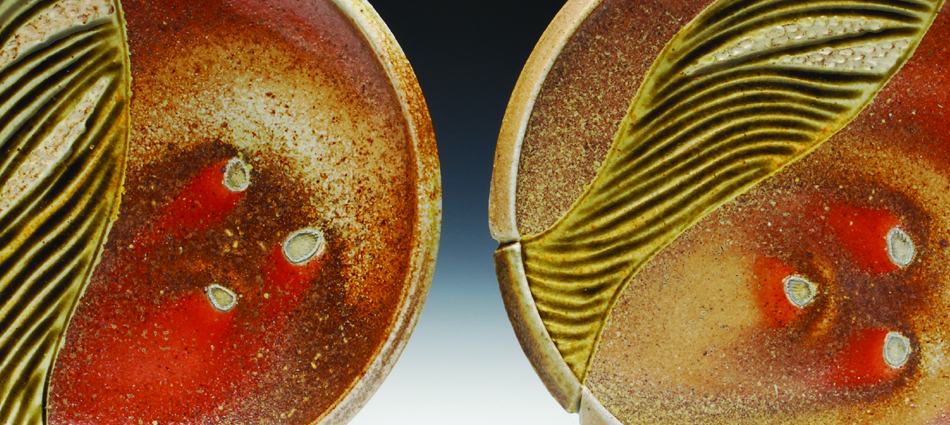Joy Tanner wood and soda fired pottery

Creative Process
I currently work with stoneware and porcelain clays that I throw on the wheel and alter. I love to incorporate elements of texture into my work that I carve, impress or stamp into the clay at specific stages of the making. After each form is complete, when the clay is leatherhard, the pieces are each dipped into flashing slips. These thin clay slips will flash warm earth tones from the soda firing. Once the pots are bone dry, they are bisque fired, glazed, wadded, and loaded into the soda kiln. For the past three years I have been firing in either a gas soda kiln or a wood and soda kiln. Now that I am a resident artist at the Exchange I will firing primarily in the wood kiln that burns pallets that come in at the landfill. Visit www.energyxchange.org for more information about the Energy XChange.
During the end of the firing, a soda ash solution and a baking soda mixture is either sprayed or dumped into a port in the kiln. These magical ingredients then vaporize and travel throughout the kiln, landing on the pots stacked within the shelves. The soda acts as a glaze on the pots, creating variation and directional tones within the clay surfaces. After the firing, the kiln will need to cool for two days, and then its time for unloading and soaking in all the results! After the firing, the pots are lightly sanded to smooth out rough spots from the wadding marks and soda. Then I weave basket reed into a handle to fit on the jars, teapots and decorative baskets.